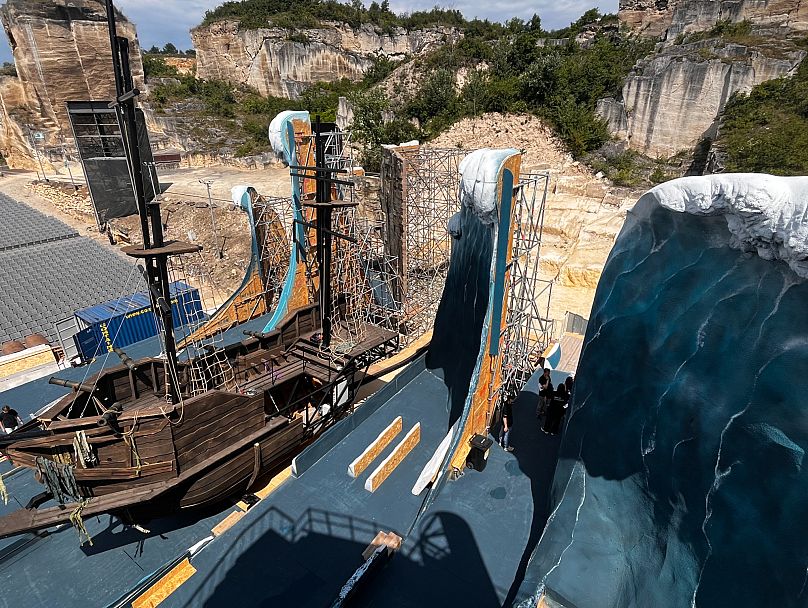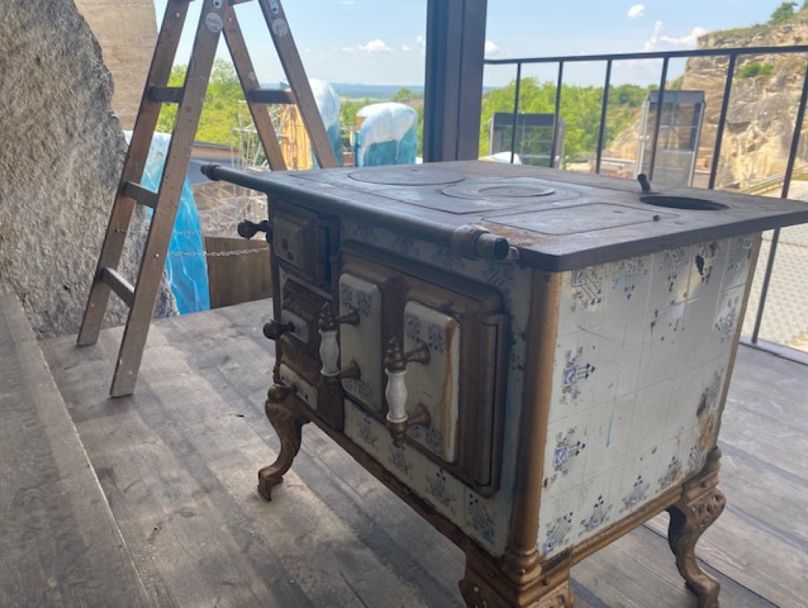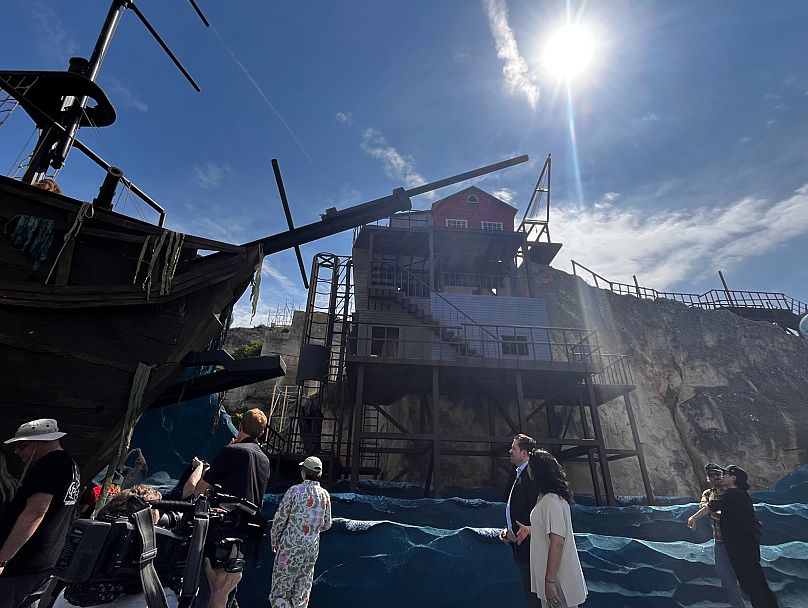How does a quarry become the largest and one of the most unique open-air stages in Europe, and the setting for some of the world’s most famous operas? Just a few kilometres from Lake Neusiedl, in Sankt Margarethen im Burgenland, Austria, Richard Wagner’s opera Der Fliegende Holländer is being staged in a spectacular manner this summer. Producing this opera required nearly two years of preparation, to create a set and a performance worthy of the imposing setting.
Daniel Serafin, the opera’s artistic director, told us that it all begins with the creative team working out how the stage should look and then building the set elements, a process that takes several months before the pieces are set up in the quarry. Then come the rehearsals.
The larger, heavier sets are moved by machine, the lighter ones by hand. For example, the walls of Senta’s house are moved by a technician during the performance with little effort, as stage manager Attila Galácsi demonstrated to our crew. The playing area is about 950 square metres, with some elements of the stage up to 22 metres high. The rocks of the quarry are also an integral part of the set. This huge space represents an equally huge challenge.
Boiling hot days, bitterly cold nights
And then there’s the weather. The sets are built to withstand wind and rain. Attila Galácsi also explained that there are several measuring stations in the quarry area, which measure the amount of rainfall and the strength of the wind. Above a certain level, they can decide to stop or cancel the show.
Stage director Philipp Krenn explained that not only the rocks of the quarry, but also the sunset were incorporated into the performance of the Dutchman.
He explained that they are very much influenced by the weather and nature. For example, when chirping birds fly over the stage. This connection is very fitting to the Dutchman, as Krenn sees it, as the Dutchman is also inextricably linked to nature, the sea, while his love interest Senta is connected to the land.
The rehearsal period wasn’t always just the hard work crew and artists are used to. In May and June, the temperature rose several times during the day to 30 degrees, which made it very difficult to work in the quarry, where the only shade is provided by the set. They tried to drink plenty of water and wore hats. As the performance starts at daylight and ends in the dark, work often continues until dawn. By then the crew are fighting the cold. Philipp Krenn says that he keeps a winter coat in his dressing room alongside his summer hat, because he has to put it on at night.
On the huge stage, 60 to 65 artists perform together at times, and the spectacular set elements dwarf the human being, in particular the sea waves. The director promised that it will be an astonishing sight to see the ship rise out of the sea with the sailors on board.
The quarry, owned by the Esterházy family, has been in operation since Roman times. It is now a UNESCO World Heritage Site. It is also the source of the building materials for many of Vienna’s iconic buildings, such as St Stephen’s Cathedral, which is still supplied with stones from across the stage for repairs and maintenance.








